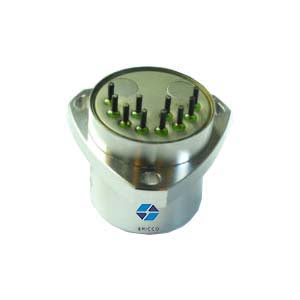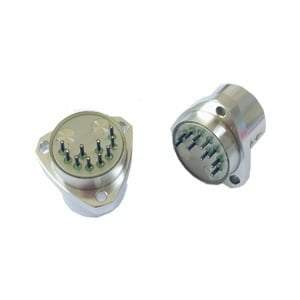Accelerometers, also known as acceleration sensors, are devices capable of measuring the acceleration of electronic equipment. They are crucial components in inertial navigation systems, where combinations of six or more accelerometers can achieve independent navigation without the need for gyroscopes, enabling gyro-free navigation.
Among the many types of accelerometers, quartz flexure accelerometers stand out for their simplified structure and cost-effectiveness, attributed to their flexible support technology and rational design.
This article analyzes and evaluates various performance indicators of accelerometers to better understand and control their selection for practical engineering applications. The key parameters include scale factor, zero offset, and zero stability, with particular emphasis on scale factor, zero stability, and zero offset.
1.Theoretical Analysis:
The ideal accelerometer steady state output voltage is expressed as:

Where A1 is the specific force of the input axis I (m/s²); Ka is the scale factor (V/(m/s²))
But actually, the steady state output voltage of the indicated accelerometer should be:

Where ea is the voltage error corresponding to the zero bias of the accelerometer.
2.Scale factor
Scale factor will be due to the surrounding temperature changes caused by the different scale factor, scale factor is the accelerometer corresponding to the ratio of output to input, one of the indicators affecting the accuracy of the accelerometer. This is generally used on-site binding and constant temperature measures to overcome the impact of ambient temperature on the accuracy of the accelerometer.
3.Zero bias
Accelerometer zero bias refers to when the accelerometer has no acceleration input, a variety of interference factors caused by the accelerometer produces a non-zero output. This causes the accelerometer to produce additional measurement errors. Its zero bias is divided into two parts: system zero bias and random zero bias, respectively, and the system zero bias is the main one.
The following table shows the zero bias and scale factor of ER-QA-03A series quartz accelerometers.

3.1 Random Zero Bias Position
Random zero bias is a random noise due to a series of random disturbance factors. Observations show that the random zero bias is composed of two parts: the smooth random zero bias and the random wandering zero bias.
For traditional accelerometers, the smooth random zero bias accounts for the main component, and its standard deviation or bias stability is an important technical index for measuring and evaluating the performance of accelerometers; while for MEMS accelerometers, the main error becomes the random wandering zero bias. When the inertial navigation system adopts state feedback control, the influence of random zero bias on the inertial navigation system will be eliminated.
3.2 System zero bias position
One of the factors contributing to the accumulation of navigation system errors over time is the system zero bias position. The system zero bias is due to the systematic interference factor, and has a certain regularity, and the physical meaning can describe the algebraic polynomial meaning very clearly.
In the linear case, the static error mathematical model of the accelerometer is an algebraic polynomial model of the relationship between only the additional measurement error of the accelerometer and the higher-order nonlinear terms of the specific force, the cross-axis-sensitive effect terms (referring to the relationships between the input axis and the pendulum axis, between the input axis and the output axis, and between the output axis and the pendulum axis) and the cross-axis-occasional effect terms.
The polynomial coefficients in the mathematical model of the system's zero bias are generally obtained through a series of experiments. The method of obtaining them: based on the observed data from the experiments, the least squares estimation of the polynomial system is accomplished by using the least squares method or the stepwise regression algorithm, and the response variable of the polynomial regression equation is the estimated value of the system zero bias.
Thereby, the estimated value of the system zero bias is subtracted from the accelerometer output, which can provide the operating accuracy of the accelerometer and ultimately improve the navigation accuracy of the inertial guidance system.

4.Summary
In conclusion, this article focuses on the analysis and evaluation of performance indicators such as scale factor, zero offset, and zero stability of accelerometers to facilitate better control and selection for engineering applications. Key considerations include the impact of environmental temperature on the scale factor, the importance of considering zero offset voltage error, and the challenge of compensating for dynamic errors.
It is worth noting that the ER-QA-03A1 accelerometer offers a scale factor of 15 ppm and bias repeatability of 10μg, enabling high-precision measurements. Besides widespread applications in aerospace and military fields, it is also extensively used in automotive, medical, and research domains. In scientific research, it finds applications in studying seismic events, crustal movements, astrophysics, and microgravity environments.
I will appreciate it if this article helps you a lot. For more information, please feel free to contact us.
More Technical Questions
1. Structure Design of High Precision Quartz Flexible Accelerometer
2. In-Depth Exploration: What Exactly is Satellite Timing?
3. Methods to Maintain the Long-Term Performance of Quartz Flexure Accelerometers
4. Analysis of Temperature Characteristics of Quartz Flexible Accelerometer
5. MEMS Accelerometers for Analyzing Mechanical Vibrations
6. Factors Affecting the Stability of Q-Flex Accelerometers
Products in Article







